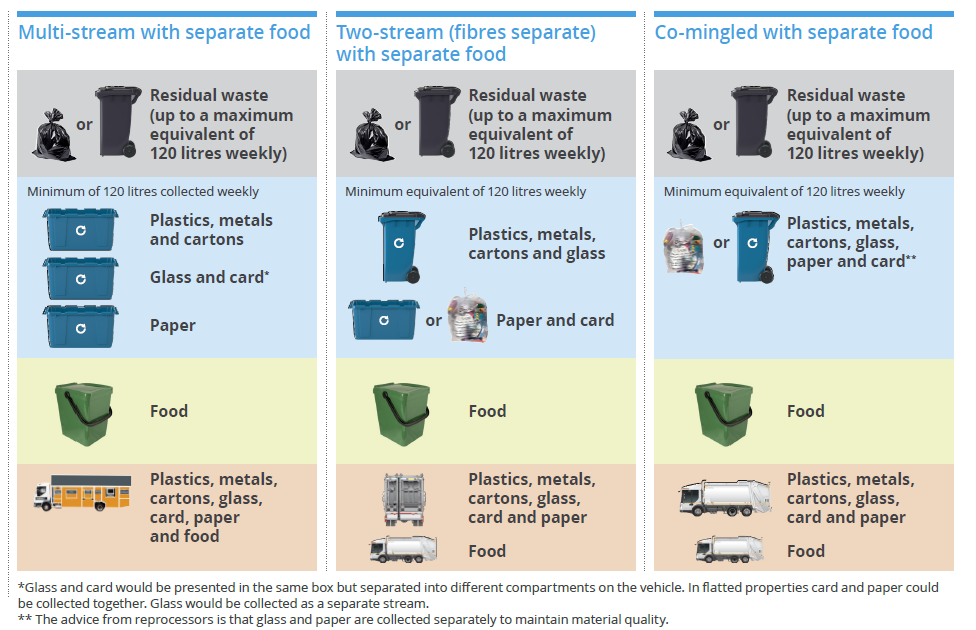Collection System Design
Behaviour
The size of the bin given to householders for Residual Waste and the frequency with which it is emptied can also vary according to the behavioural change being targeted by the relevant Waste Collection Authority. By constraining the capacity of the Residual Waste container issued to its residents the more the resident is 'pushed' into increasing the items for recycling.
For instance a Waste Collection Authority may choose to issue a smaller bin to residents restrict Residual Waste or it may supply a slightly larger bin that is collected less frequently. The other option available to the Waste Collection Authority is to issue its residents with both a smaller bin that is also collected less frequently.
Whatever the size of the bin chosen by the Waste Collection Authority for Residual Waste it must do so in tandem with more frequent collection of Food Waste and Dry Recyclables to compensate for the reduced capacity.
Charging for Service
The collection of waste and recyclables from residents is a legal requirement and no charge can be made for this service. The exception under the Controlled Waste (England and Wales) Regulations 2012 allows a Waste Collection Authority to charge their residents for the collection of their Green Waste which has led to two types of arrangement being implemented across the country, systems
- Free Collection or Green Not Charged - Most authorities initially did not charge their residents for the collection of their Green Waste and those that continue to provide the service with no charge/fee, do so either becuase of a political reluctance to charge and/or a perception that a change would lead to a drop in recycling figures or a political desire to retain their position as a 'high achieving recycling authority'.
- Charged Collection or Green Charged - Many authorities have moved to a charged system, mainly driven by a desire to recover the cost of collection from those that use it the most, but also due to the perception that free collection leads to an increase in collected waste and a reduction in, for example, home composting.
In addition to Green Waste collected by the Waste Collection Authority, Green Waste is also handled by the Waste Disposal Authority at a Household Waste Recycling Centre where the public bring their Garden Waste/Green Waste to be bulked up and disposed of in a similar way to the collected Green Waste.
Service Structure/Combination
WRAP in their report on greater consistency[1] proposed the following default approaches to Collection System Design, although the number of systems presently in use show little sign of aligininig with these default options:

